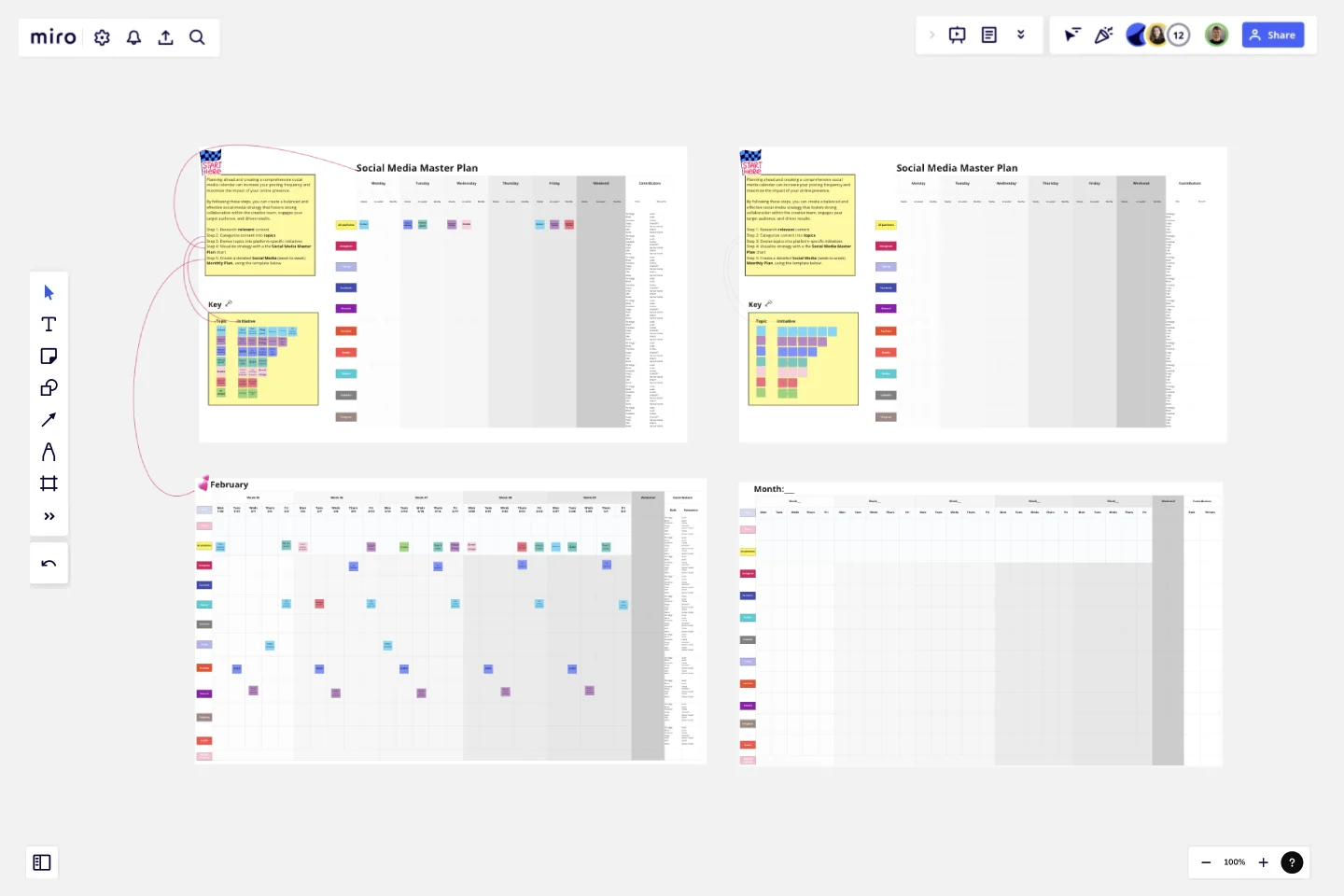Social Media Strategy Planning
This template is designed to help individuals and organizations plan and organize their social media content.
The purpose of the template is to provide a roadmap for strategizing a social media calendar that is aligned with your goals and target audience.
The template helps you achieve a cohesive and organized social media presence by providing a structure for scheduling and tracking your content. It allows you to plan and prioritize your content in advance, which helps you to consistently publish relevant and engaging content that resonates with your target audience.
Marketing and communication teams, small business owners, and freelancers in the creative industries would benefit the most from this template. It can help these individuals and teams save time and ensure their social media efforts are aligned with their overall marketing strategy.
To use the template, simply fill out the various sections, including the dates you plan to post, the type of content you plan to share (e.g., text, image, video), and the goals you hope to achieve with each post. Review and adjust the calendar regularly to ensure it is up-to-date and aligned with your goals.
This template was created by Jami Sabety-Javid.
Get started with this template right now.
Strategic Action Framework
Works best for:
Roadmap, Planning, Mapping
The Strategic Action Framework template provides a structured approach for developing and implementing strategic initiatives. By defining goals, strategies, and action plans, teams can align their efforts with organizational objectives and drive progress towards desired outcomes. This template fosters collaboration and accountability, ensuring that strategic initiatives are executed effectively and deliver measurable results.
Outcome Mapping Template
Works best for:
Diagrams, Mapping, Project Management
Use Miro’s outcome mapping template to improve your operational efficiency. Outcome mapping will help you visualize all the possible strategic outcomes for your upcoming project, allowing you to see into the black box to identify any potential challenges along the way.
UML Sequence Deployment Pipeline Template
Works best for:
UML
The UML Sequence Deployment Pipeline Template in Miro visually maps the sequence of steps in an automated deployment pipeline, helping teams in software development and deployment. It helps identify bottlenecks, standardizes the deployment process, and facilitates new member onboarding for continuous improvement.
Service Blueprint by Habanero
Works best for:
Service Blueprint
Optimize your service processes with the Service Blueprint Habanero. This template allows you to map out and scrutinize each aspect of your service delivery, highlighting customer touchpoints and internal processes. Use it to identify inefficiencies, streamline operations, and enhance the overall customer experience. Perfect for service designers, managers, and improvement teams, it offers a detailed approach to refining and innovating your service offerings.
Empathy Map for Product Development
Works best for:
Empathy Map
The Empathy Map for Product Development template helps you delve into the minds of your users, understanding their needs and pain points. Use this template to gather insights that inform your product features and design. By empathizing with your users, you can create products that truly resonate with them, leading to better adoption and satisfaction. Perfect for product managers and development teams.
Product Roadmap Template
Works best for:
Product Management, Roadmaps
Product roadmaps help communicate the vision and progress of what’s coming next for your product. It’s an important asset for aligning teams and valuable stakeholders – including executives, engineering, marketing, customer success, and sales – around your strategy and priorities. Product roadmapping can inform future project management, describe new features and product goals, and spell out the lifecycle of a new product. While product roadmaps are customizable, most contain information about the products you’re building, when you’re building them, and the people involved at each stage.
